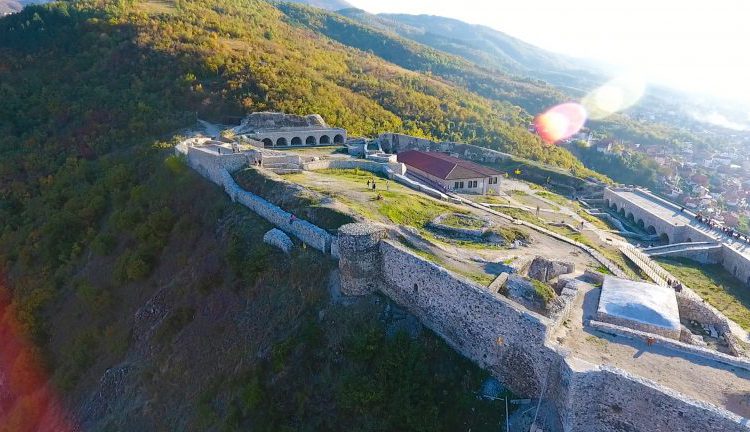Prizren Castle
The Prizren Castle contains in itself an important part of the ancient history of the city. Its topographic position, its domination over the city, a rather attractive natural landscape, and the well-thought architectural configuration render the site rather valuable in terms of archaeology, history and tourism. It is located in the eastern part of the city, over a conical-shaped hill. Fortifying walls pursue the relief lines, in an almost egg-shaped foundation, with an extension towards north-south. Written sources do not provide much on the Prizren Castle. The oldest source known is the Byzantine Chronicler Procopus of Cesar, in his work “De aedificiis” (“On Construction”). This source mentions the Petrizen Castle, meaning the today’s Prizren Castle, amongst forts renovated in Dardania, for the first time. A more thorough study was made in 1969, in which case, along with archaeological trenches, an architectural survey was made. During the research, traces dating from 16th to 19th centuries were found. Continued archaeological works in 2004 and 2009/2011 found a prehistoric settlement of the Bronze Era, and the early Iron Era, which was the first settlement of this area. Also, for the first time, such digging provided architectural traces and materials dating from the Roman Era and Late Antiquity. During the Ottoman Empire, the castle was expanded with fortified walls and fencing, and enriched with other facilities, such as the Hamam, the mosque and other military facilities. Its last renovation was made in the third decade of the 19th century, by the aristocratic family of Rrotllaj. The Prizren Fort had its primary function until 1912. From that time, the site was left unattained, thereby allowing for its degradation. During the years 2008-2010, some restoration and conservation works were undertaken to prevent such degradation, and such works are still ongoing. With its dominating position, the Prizren Castle represents one of the most important monuments in Prizren, attracting visitors from all over. Apart from its historical, architectural, scientific values, this site is of major economic relevance in terms of cultural tourism. Starting from 2010, as part of the International Documentary Film Festival “Dokufest”, an open cinema was built in the castle gate, showing various films, and enriching the castle’s functions with an important cultural activity.


